Do you like icing cupcakes? Think buttering bread is no sweat? Well, then you’ll probably enjoy palette knife painting and master the technique in no time! If that connection seems odd, it’ll all make sense soon as we work without a paintbrush.
Learn the basics of palette knife painting in this simple how-to!
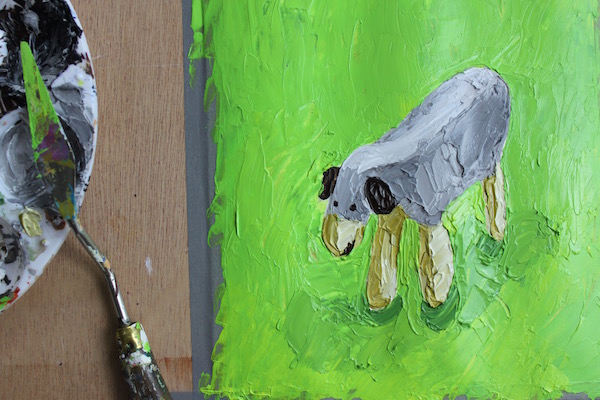
In this tutorial, there will be a little painting with a brush, but for the most part, we’re going to lay our pigment with a knife.

Before you begin, choose a subject for your painting. It could be a portrait or a still life — I chose this small stuffed animal. If it’s your first time completing a palette knife painting, I recommend picking something like this. It’s got a few colors but isn’t overly detailed. A less complex subject help you understand the basics of this acrylic painting technique.
Tools I’m using
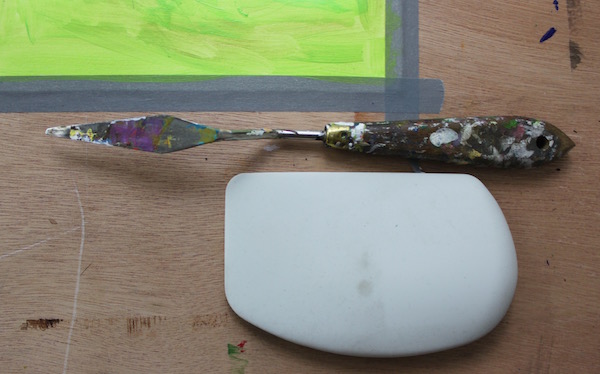
For this painting, I’m using acrylic pigment because it’s fast-drying and easy to manipulate. I’ve also grabbed my trusty palette knife and a Princeton Catalyst wedge — a wedge’s smooth edges will help spread and sculpt the pigment for our painting.
Canvas-wise, feel free to paint on whatever surface you like. Personally, I prepared a piece of paper with matte medium. This gives me a smooth finish and will help the paint go on evenly.
Step 1: Draw your subject

Once you know what you’re going to paint, record it on your canvas. Take the time to get it looking perfect so you don’t have to correct your drawing with paint later.
Step 2: Create an underpainting
Here’s the only part of this tutorial where we’ll use a brush. After that, we’re done!
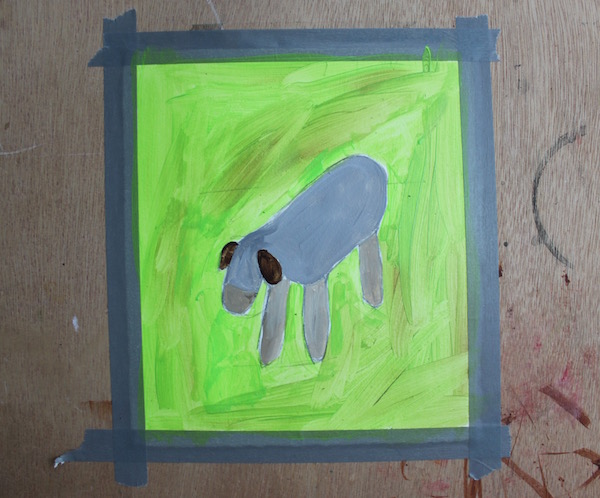
I always create an underpainting — a thin layer of pigment — to use as a guide of where I’m going to place my paint. This is also helpful as we begin to use the palette knife. If the palette-painted pigment doesn’t completely cover the canvas, this underpainting makes sure there won’t be an white surface showing through.
Step 3: Start applying paint with your palette knife
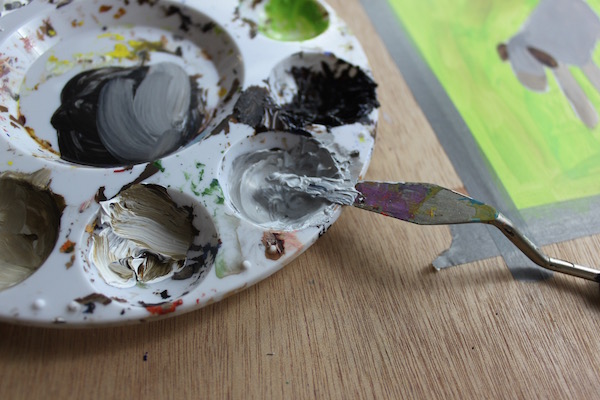
Now the fun begins! Before you start applying the paint to your canvas, make sure to mix enough pigment. A palette knife will use more paint than a brush, so mix twice as much as you normally would. Then, scoop a dollop onto the edge of your knife, and begin to spread it on the paper.
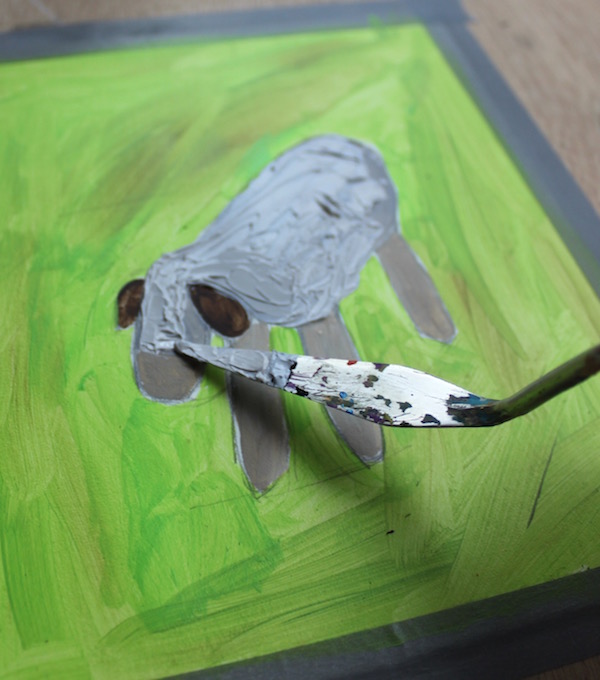
Palette knife painting is reminiscent of buttering a piece of bread or icing a cupcake. Use your tool to lay an initial spread of color, then continue that motion to move and manipulate the color. The more you do that, the thinner your surface will be. If you want a thicker texture, layer colors on top of one another.
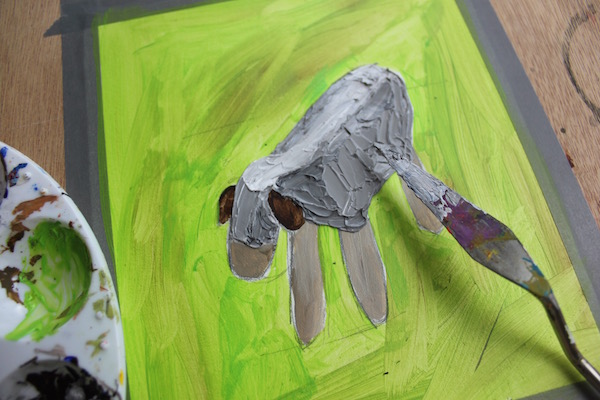
Use your knife to control where the paint goes. By simply moving your tool one direction, you can imply motion or textures. Making a squiggly-like motion with the knife in paint will create a wavy effect. Likewise, moving the tool vertically looks like something is moving up and down.
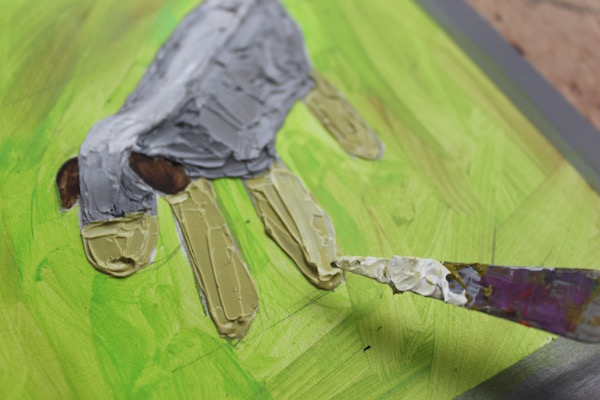
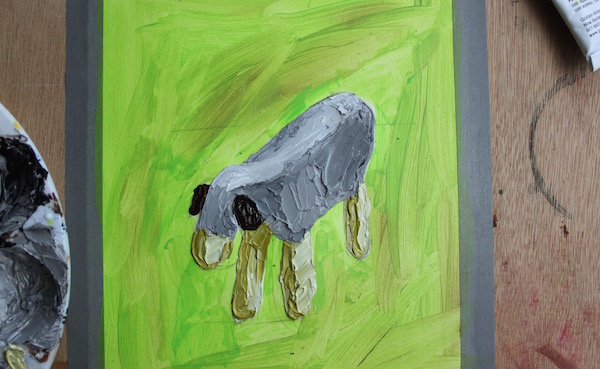
Tips for palette knife painting
- Start with a medium tone and apply lighter and darker colors over that. This is a good middle ground, especially if you’re mixing directly on your canvas.
- Try mixing your paint colors on the surface. This will help you blend and create a gradual, shaded look. If you wait for the hues to dry, you’ll increase the texture by adding layers.
- The pointed end of the knife is great for adding small details or a small amount of color.
- Don’t forget to wipe your palette knife clean. A spotless knife is better for spreading and blending the colors on your canvas.
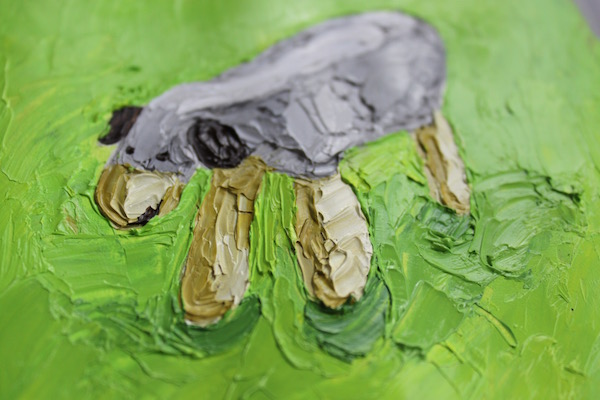
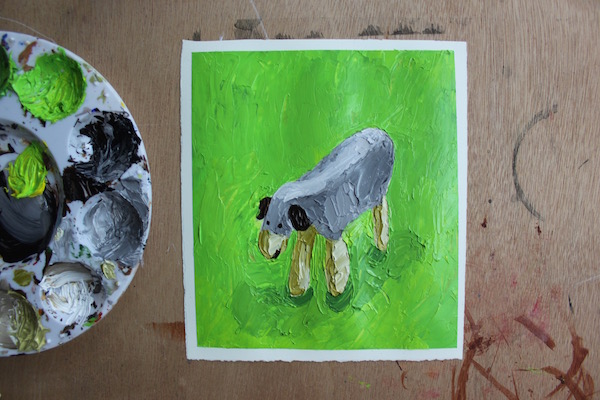

Share tips, start a discussion or ask one of our experts or other students a question.
No Responses to “Like Buttering Bread: A Simple How-To for Palette Knife Painting”